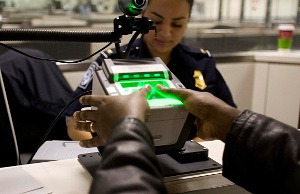Biometric ID Card, the Ministry is still wrong
September 6, 2015
On Wednesday 2 September 2015, Radio One aired a dossier on the Biometric ID Card which was prepared by Habib Mosaheb. In fact, Habib interviewed me earlier to have my views. I could sum it up in just one word, transparency.
Yes, the main problem with the Mauritius National Identity Card scheme is transparency.
Other journalists from L’express and Le Défi called me to ask questions with regards to the destruction of biometric data that were previously stored in the Central Population Database. I had the same answer, no transparency.
Where is transparency?
I read the following on lexpress.mu:
Les officiers qui ont procédé à cet exercice devraient jurer un affidavit pour confirmer la destruction des données biométriques.
That means the officers who participated in the exercise comprising of the biometric database destruction will swear by an affidavit. Is that enough? Do those people really have the technical expertise to confirm the destruction? Why should I trust them? The names of the persons haven’t been made public. Why? On Radio One, the Minister of Technology, Communication and Innovation (TCI), Roshi Badhain, said the “destruction” happened in his presence, then is he signing an affidavit?

I am asked to believe the words of other people while the process itself isn’t made transparent. Why wasn’t the press invited? In the dossier by Radio One, Minister Roshi Badhain said MSM Party leader, Pravind Jugnauth assisted the destruction of the database. Should I ask under what capacity? Is it because he had a case against the “previous government”? Then why other people who opposed the project were not invited? Should I remind some people that the country is NOT a personal business in order to do as one pleases?
In the L’express article Minister Roshi Badhain is reported to have said the following:
Pour nous, la mission a été accomplie. Ceux qui sont contre le fait de sauvegarder des données biométriques sur la carte peuvent mener leur combat.
That means, what others believe and are fighting for are meaningless for the minister. The destruction of the database has cost the government approximately Rs 6M (including the travel & stay expenses of Singaporean consultants). Other people are still fighting for the non-usage of fingerprints in the identification process. What happens when tomorrow those people win? Will the government spend millions again for a change or did the minister already assume that the fight of others is meaningless?
How can the minutiae be misused?
 The main argument of Minister Roshi Badhain is that the storage of fingerprints in a government controlled database could allow misuse or abuse. Why? Because the fingerprints could be used for matching purposes without a person’s permission. The minister argues that the current model comprises of having fingerprint minutiae stored only in the identity card and matching is done with a live fingerprint using a standalone reader. Ahaan! Do we have specifications of these readers? Nope. In fact, the website of the MNIC centre is dead since several months and no one has thought it’s necessary to revive it for people seeking information. So, let’s come back to this “standalone reader”. What does it compare? According to the Minister, it matches the minutiae stored in the card against the live fingerprint of a person. Can that reader match the minutiae with another source of fingerprints, let’s say fingerprints collected on a crime scene? If that happens, wouldn’t it be the same as “fingerprint matching” without consent?
The main argument of Minister Roshi Badhain is that the storage of fingerprints in a government controlled database could allow misuse or abuse. Why? Because the fingerprints could be used for matching purposes without a person’s permission. The minister argues that the current model comprises of having fingerprint minutiae stored only in the identity card and matching is done with a live fingerprint using a standalone reader. Ahaan! Do we have specifications of these readers? Nope. In fact, the website of the MNIC centre is dead since several months and no one has thought it’s necessary to revive it for people seeking information. So, let’s come back to this “standalone reader”. What does it compare? According to the Minister, it matches the minutiae stored in the card against the live fingerprint of a person. Can that reader match the minutiae with another source of fingerprints, let’s say fingerprints collected on a crime scene? If that happens, wouldn’t it be the same as “fingerprint matching” without consent?
The issue is, once you put your finger in a reader, your fingerprint can be matched not just against the minutiae on the card but against any other source of fingerprints. That is why, the technical specifications of readers are very important.
Unfortunately, like the ICT Ministry under the previous government, the current Ministry is doing the same mistake; that is acting without proper consultation. Most probably, the Minister is listening to the same technicians who have been on this project since beginning. If they failed it once, chances are they will fail it again, unless they broaden the consultation.